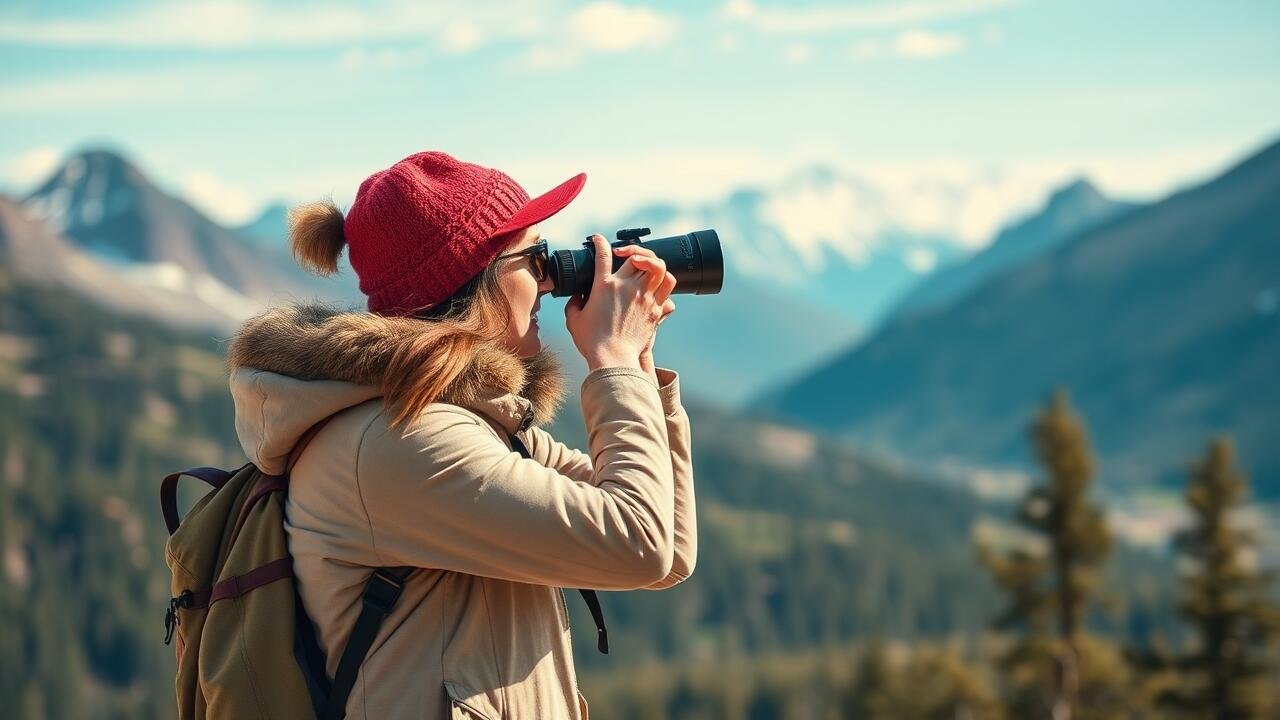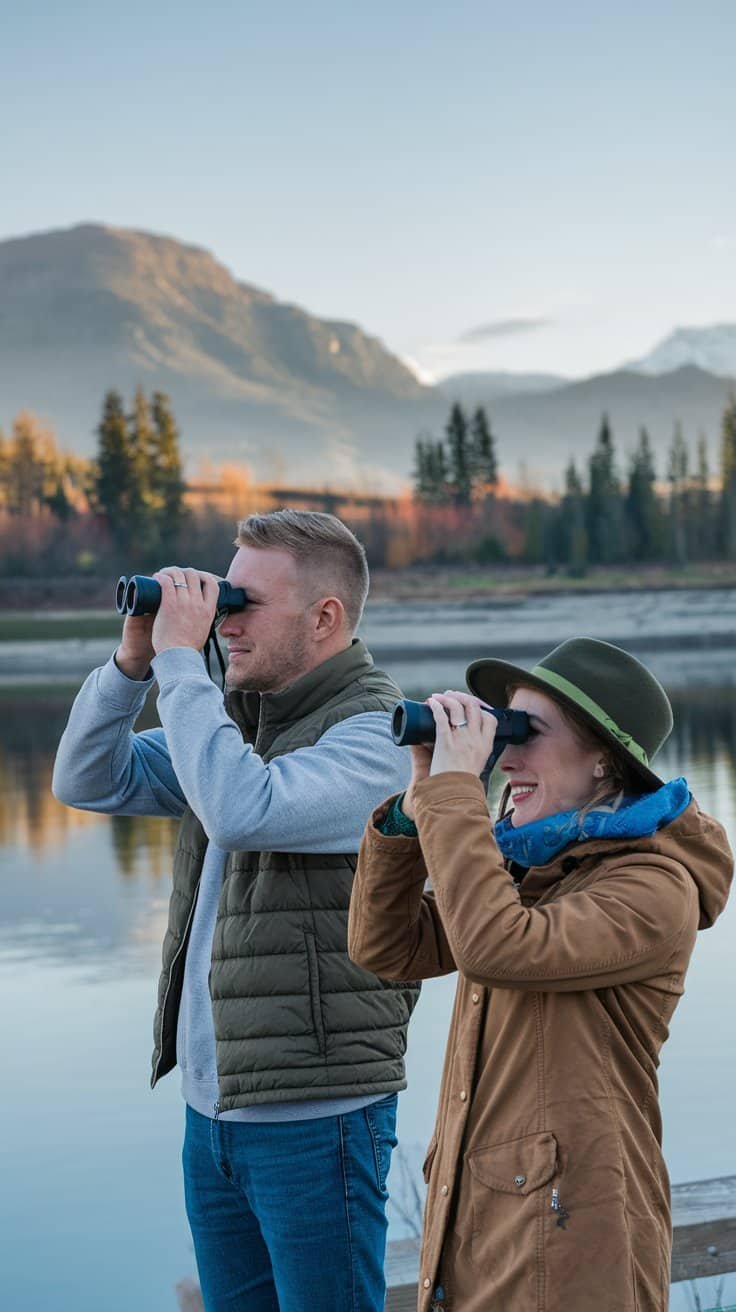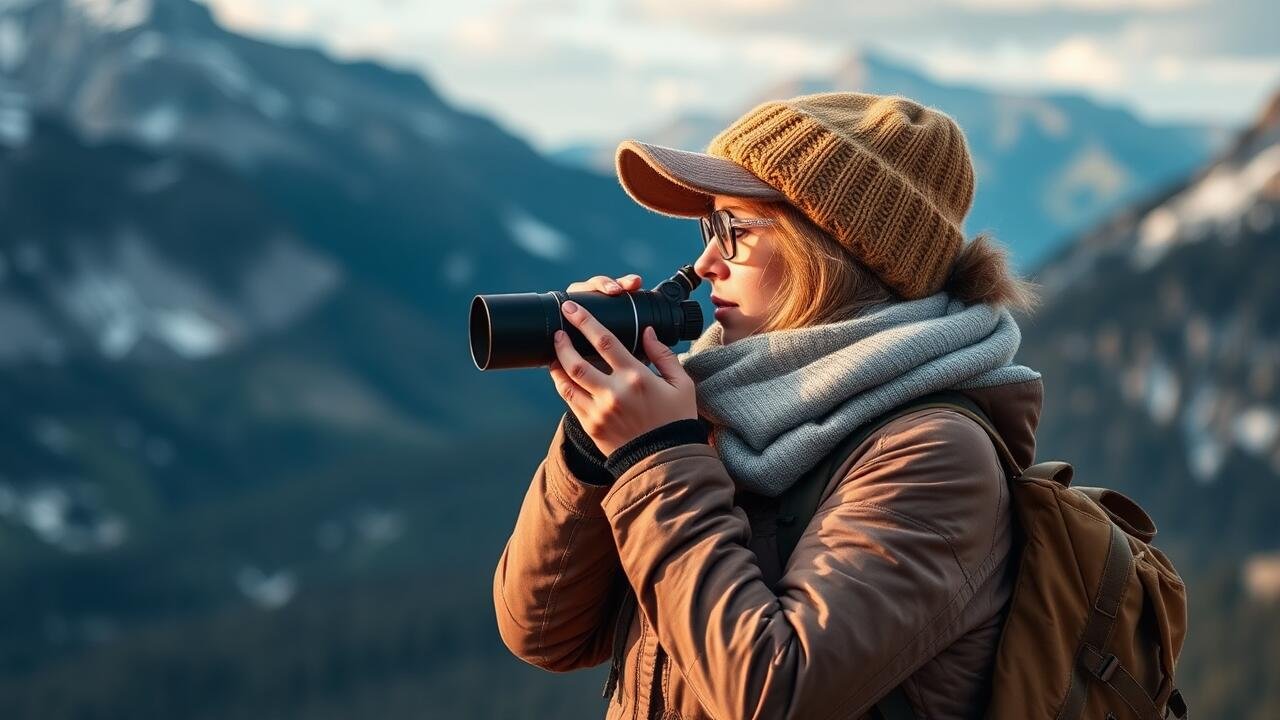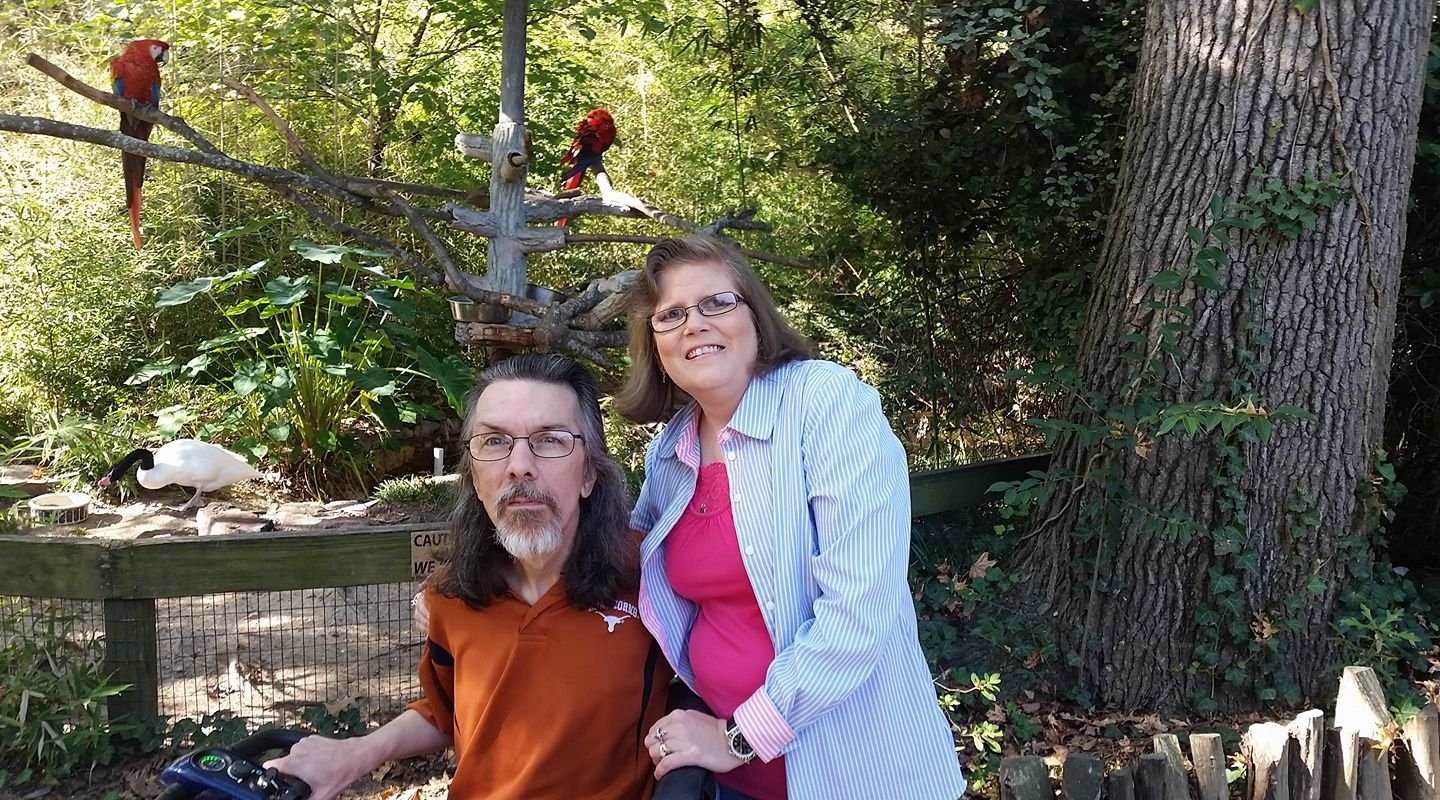Table Of Contents
How to Document Your Bird Sightings for Accurate Bird Sighting Records
Key Takeaways
- Understanding the significance of recording avian observations
- Necessary equipment for tracking feathered friends
- Methods for structuring your bird observations
- Strategies for precise recording
- Improving your recording abilities
- Communicating and working together on bird observations
How To Document Your Bird Sightings | Importance of Documenting Bird Sightings
Documenting bird sightings is essential for birdwatchers as it enhances the overall birding experience and contributes to the broader understanding of avian populations. Knowing how to document your bird sightings allows birders to track their observations, recognize patterns, and share valuable data with fellow birdwatchers. This practice creates a personal record that not only showcases individual progress but also supports community efforts in conservation and research. By recording details such as the location of a birdfeeder or specific characteristics of the birds observed, birders contribute to a cumulative knowledge base that can aid in protecting diverse species. The importance of effective documentation cannot be overstated, as it fosters a deeper connection to nature and encourages responsible bird watching practices.
How to Document Your Bird Sightings | Benefits for Birdwatchers
Documenting bird sightings offers numerous benefits for birdwatchers. By keeping a record of different species such as the eastern bluebird, western bluebird, and sparrows, enthusiasts can enhance their understanding of avian behavior. Knowledge gained from observing bird feeding habits and listening to bird songs enriches the overall birdwatching experience. Utilizing tools like eBird allows users to track their sightings systematically and share their findings with a larger community of bird lovers.
Creating a detailed account of bird sightings also aids in recognizing patterns in migration and breeding. Spotting a hawk, like the rough-legged hawk, in different seasons can provide insights into habitat preferences and environmental changes. Documenting these observations contributes to a broader appreciation for the diversity of birds in various locations. Through effective documentation, birdwatchers not only improve their skills but also foster a deeper connection with nature.
Make sure you check out my The Complete Guide to Wild and Pet Bird Care: Tips, Products, and Resources.
Contributions to Scientific Research
Documenting bird sightings serves as a vital resource for scientific research. By actively recording observations, birdwatchers contribute valuable data that aids in understanding species behavior and population trends. For instance, noting the color of a white-crowned sparrow’s plumage or the distinctive beak of a gull can help ornithologists track changes in bird morphology and adaptations. Tools like merlin bird ID and binoculars enhance the accuracy of these observations, allowing enthusiasts to capture details about species such as owls or shorebirds in their natural habitats.
Each sighting enriches the collective knowledge base regarding avian species. Noteworthy entries, such as spotting a flock of warblers or a solitary worm-eating warbler, become essential pieces in the larger puzzle of ecological research. As birdwatchers document these experiences, they share insights on migratory patterns, breeding behaviors, and habitat preferences. This collaborative effort underscores the importance of learning how to document your bird sightings, as it directly impacts the conservation efforts aimed at protecting these remarkable creatures and their environments.

Essential Tools for Documenting Bird Sightings
Effective documentation of bird sightings requires the right tools to enhance your observations. A notebook or journal serves as an invaluable resource for jotting down details about each sighting, including the physical characteristics and behaviors of species like the cuckoo or yellow warbler. Utilizing a spotting scope allows for close-up examination of birds in their natural habitat, ensuring accuracy in your documentation. Field guides provide essential context regarding endangered species and their environments, while a camera can capture stunning images to complement your notes. Sound recording devices can also help document unique calls and songs, enriching the record of your observations. Mastering how to document your bird sightings will lead to a more profound understanding of avian life.

Notebooks and Journals
A dedicated notebook or journal serves as an invaluable resource for birdwatchers looking to enhance their skills in bird identification and documentation. By recording detailed descriptions of each sighted bird, including unique characteristics, colors, and behaviors, birders can create an essential reference that helps in recognizing patterns and trends in their bird observations. Keeping track of each bird sighting, especially rare bird sightings, allows for a richer understanding of local avian ecology. This resource can evolve into a comprehensive bird report over time, providing insights that can benefit both the individual and the birding community.
Using a journal also encourages continuous learning and reflection. Each entry can detail the date, location, and time of the bird encounter, along with sketches or photographs that reinforce the bird description. This practice is not only beneficial for personal growth but also aids in the sharing of information with other birders and researchers. Mapping out sightings and compiling data on various species fosters a deeper connection with nature and enhances the overall experience of birdwatching. Through diligent record-keeping, birders develop the skills necessary for effective bird identification and contribute meaningfully to the broader community.
Digital Apps and Software
Numerous digital apps and software have emerged as valuable tools for birdwatchers looking to enhance their birding experiences. These platforms allow both novice and experienced birders to easily document their sightings with features that facilitate quick entries. Users can include essential details like location, time, and even an unusual bird description in their records. Such tools enable birdwatchers to create a comprehensive log of their observations, including rare bird documentation and mystery birds that pique their interest. With integrated bird guides, documenting birds becomes a seamless experience, helping to improve good bird descriptions and their overall understanding of avian species.
Incorporating technology into birdwatching transforms the way enthusiasts track their observations. With many apps available, users can categorize their bird entries and add notes on behavior, habitat, and physical characteristics. This digital approach enables easy access to personal birdwatching experiences while allowing birders to share data with others in the community. Apps often feature photo uploads, supporting visual documentation that complements written accounts. A good bird description paired with photos enhances the value of recordings and can spark discussions about specific sightings within birdwatching networks. Learning how to document your bird sightings effectively combines the joy of discovery with data collection, promoting a deeper appreciation of avian life.
How to Organize Your Bird Sightings
Organizing your bird sightings is essential for maximizing your birdwatching experiences. A birdwatching journal can serve as a central repository for my sightings, ensuring that each observation is documented effectively. Including details such as date, location, and the species observed—especially unidentified birds and rare bird records—helps enhance your bird identification skills. Using a paper bird guide alongside digital methods allows for a comprehensive approach to tracking your incredible birdwatching journey. A camera birdfeeder can also provide ample opportunities to observe unusual birds, making the process of documenting sightings both enjoyable and informative for every birding journey.
Creating a Systematic Record
A systematic record of bird sightings is essential for anyone serious about birdwatching. Real birders understand the value of detailed documentation, especially when tracking past sightings of rare bird species. Several birders utilize this method to enhance their knowledge and share insights within the birdwatching community. By noting every sighting, including field bird descriptions and conditions, birders can compile valuable information that aids in identifying trends and patterns, benefiting not only themselves but also fellow birders.
Organizing sightings can be made easier by referring to a bird encyclopedia that categorizes species and provides essential information. Top birders often recommend keeping a consistent format to ensure that all vital details are captured for each sighting. This systematic approach allows birders to look back and analyze their experiences, fostering a deeper understanding and appreciation of avian life. By mastering how to document your bird sightings effectively, a birder can contribute significantly to the collective knowledge within the community.

Using Field Guidebooks
Field guidebooks serve as essential resources for birdwatchers looking to improve how to document your bird sightings. These guides provide detailed information on official bird species, including specific bird features like plumage colors, sizes, and distinctive calls. Many birdwatchers rely on American bird guides for quick identification during birdwatching tours or casual outings. Notable sightings can be easily recorded alongside illustrations found in these field books, helping to reinforce memory and enhance personal bird databases.
Using a field guidebook can also facilitate an understanding of bird activity patterns. Observing a smart birdfeeder equipped with a Feathersnap camera birdfeeder can yield insights into the behavior of various species. This integration of technology with traditional methods allows birdwatchers to document and analyze sightings effectively. Exploring these resources promotes a deeper connection to the bird cause and enriches the birdwatching experience, ultimately benefiting both personal enjoyment and scientific contributions.
- Get familiar with the layout of the guidebook for easy navigation.
- Use the illustrations and descriptions in the guide to make accurate identifications.
- Keep your field guidebook handy for quick reference during birdwatching trips.
- Take notes on each sighting to track which species you’ve seen over time.
- Pair your field guide with a smartphone app for additional features and community sharing.
- Share your findings with fellow birdwatchers to enhance learning and discussions.
- Don’t forget to enjoy the process and immerse yourself in nature while birdwatching!
Techniques for Accurate Documentation
Effective documentation is crucial for enriching bird knowledge and enhancing your birdwatching adventure. To successfully document your bird sightings, create a detailed bird list that includes each species you observe, particularly focusing on rare bird species. Noting physical characteristics, behavior, and habitat preferences can aid in identifying these wild birds and contribute to larger studies on bird populations.
Incorporating a bird calendar allows you to track seasonal patterns and the presence of rare birds in your area. Engaging with the global birdwatching community fosters collaborative efforts to promote inclusive birding initiatives while sharing rare birds tips and experiences can inspire fellow bird enthusiasts. By learning how to document your bird sightings meticulously, you not only enhance your skills but also contribute valuable data to ongoing conservation efforts.

Noting Physical Characteristics
Observing the physical characteristics of many bird species is essential for accurate documentation. Capturing details such as size, color patterns, and distinguishing markings helps create a comprehensive record of your sightings. This process not only strengthens your ability to identify certain birds but can also improve your understanding of bird behavior. Documenting the sighting date and context, such as where you spotted a rare bird, enhances your notes. Sharing these findings with a local birdwatching group can spark engaging discussions and lead to deeper insights into bird population trends.
A digiscoped bird photo can serve as an invaluable reference for future identifications, especially when it pertains to strange or notable birds. Being able to revisit your first sighting of a rare bird allows you to track your growth as a birdwatcher. Jotting down your birdy thoughts about each observation can also help solidify your memory of the experience. With these practices, you will expand your skills in how to document your bird sightings while contributing valuable information to the birdwatching community.
Recording Location and Time
Accurate recording of location and time is essential for anyone looking to enhance their skills in how to document your bird sightings. A well-maintained bird list provides valuable context for each observation, helping casual birders track their experiences over time. Documenting where you spotted a tall dark bird or heard birds singing can be crucial for spotting new birds during your next birdwatching adventure. Each entry contributes to a more comprehensive understanding of local avian visitors, enabling birdwatchers to appreciate patterns and seasonal variations.
Taking note of the time adds another layer of detail to your documentation. Observing a rare sighting of a state bird can have different implications depending on when it occurred. Recording the exact time allows birders to identify peak activity periods for different species. This data not only enriches personal bird lists but also supports broader scientific efforts in understanding bird behaviors and migration patterns. Emphasizing accurate timekeeping alongside location information ensures proper birding experiences that lead to ongoing discoveries in the world of ornithology.
For more on the topic of bird locations, please check out Best Birdwatching Locations in the US
Enhancing Your Documentation Skills
Improving your skills in documenting bird sightings can significantly enhance your birdwatching experience. Understanding how to document your bird sightings effectively allows you to create a comprehensive bird life list that includes both visual and heard-only birds. Utilizing an eBird checklist not only aids in counting birds but also helps track the diversity of neighborhood bird species and the local bird population.
Engaging with other eBirders can lead to shared insights on endemic birds and winged visitors you might encounter. Such collaboration often proves essential in contributing accurate records to bird records committees, fostering a deeper appreciation for bird life in your area. Focusing on various techniques can elevate your observational skills and enrich your understanding of bird behavior and habitats.
Photography Tips for Birdwatching
Capturing stunning images of wild birds can elevate your birdwatching experience and enhance how to document your bird sightings. Focus on understanding bird distributions and the behavior of local birds to anticipate their movements. For example, knowing the times that nocturnal birds are most active can significantly improve your chances of photographing them. Utilize eBird hotspots to locate potential new life birds while also being mindful that misidentified birds can lead to inaccurate documentation.
To become a full-fledged birder, mastering photography techniques is essential. Use natural light to your advantage, which will help reveal the true colors and details of your subjects. Stealth is crucial; approach unlikely birds slowly to avoid startling them. Capture a variety of angles and compositions to enrich your list of birds, ensuring you have high-quality images that aid in recognizing and appreciating both common and rare species. Remember these tips as you embark on your journey of how to document your bird sightings effectively.
Identifying Common Species
Recognizing common bird species can significantly enhance how to document your bird sightings. By actively participating in platforms like the ebird community, you can create an ebird checklist to track various living birds. This checklist not only serves as a personal record but also contributes to broader scientific observations. As your bird list grows, the value of documenting becomes evident. Engaging with tools like the Merlin Bird App provides insights into species identification, making you a more tech-savvy birder.
Navigating resources such as birdforum.net and following ebird rules can help you refine your identification skills. Working alongside local bird committees or utilizing second ebird tools can offer additional support as you enhance your documentation process. Effective communication with fellow birdwatchers can further establish a network that enriches your understanding and appreciation of common species. The synergy of these resources ensures that how to document your bird sightings becomes an enjoyable and educational experience.
Sharing and Collaborating on Bird Sightings
Sharing experiences and observations enhances the birdwatching community. Knowing how to document your bird sightings accurately allows others to appreciate avian habits and specific plumage details. For example, noting the flocking posts of western bluebirds or the remarkable plumage of new owls creates a shared resource for enthusiasts. The eBird platform enables birdwatchers to contribute their observations, while the eBird mobile app makes documenting avian activity on-the-go effortless. Participating in the eBird essentials course can sharpen skills and connect birders with like-minded individuals eager to share insights about their avian guests. This collaborative approach enriches the entire birdwatching experience.
- Share your sightings on social media to reach a wider audience.
- Use birding apps to keep track of your observations in real-time.
- Join local birdwatching groups to exchange tips and coordinate group outings.
- Attend birding festivals or events to meet other enthusiasts and learn from experts.
- Contribute to citizen science projects that rely on your observations for research.
- Create a blog or a journal to document and share your birdwatching adventures.
- Participate in online forums or communities dedicated to birdwatching.
Conclusion
Understanding how to document your bird sightings can significantly enhance your birdwatching experience and contribute to a greater appreciation of avian life. By focusing on details such as feather patterns and noting the migratory patterns of various species, observers can create rich, informative records. Utilizing tools like an eBird account or engaging with the community on birdforum.net’s lifelist/yearlist subforum allows enthusiasts to share their findings and learn from others. Effective documentation not only aids personal growth but also fosters collaboration among birdwatchers who often notice flocking behaviors and unique interactions within a flock. Embracing these techniques encourages a deeper connection to nature and the diversity of bird species.
FAQS
What are some effective ways to document your sightings of birds while bird-watching?
To effectively document your sightings while bird-watching, keep a detailed diary of your birding experiences. Note the location, date, and time of each sighting, as well as any interesting behaviors of the birds, such as rare sightings or interactions between different species. Use tools like ebird to track your observations and maintain a bird list that becomes part of your inclusive birding efforts.
This will help you not only document birds but also enhance your skills as a bird watcher by allowing you to reflect on certain sightings, such as when you spot strange birds like the western bluebird in the east. Additionally, engaging with the birdforum.net lifelist/yearlist subforum can provide support and tips from other bird watchers, making your documentation process even more rewarding.
How can I effectively use eBird help to track my bird-watching experiences and create a diverse bird list?
To effectively use eBird help in tracking your bird-watching experiences, start by familiarizing yourself with the eBird checklist. This tool enables you to log your sightings, making it simple to list birds you’ve observed. By using eBird, you can gain insights into bird diversity in your area and even track rare species like the western bluebird east. Remember to wear a birdwatching cap while watching birds, as this can enhance your proper birding experiences and help you focus on many birds at once.
How does eBird enable bird watchers to maintain a proper birding experience through their bird list?
eBird tracks your bird sightings and allows you to create an accurate bird list, which becomes essential for documenting your birding guide. By using eBird, my bird experiences can be properly recorded, including various species like gulls, ensuring that every bird look is accounted for in your records. Additionally, an eBird checklist is a vital tool for keeping track of your observations.
What role does eBird play in ensuring that my bird list becomes a comprehensive record of my observations?
eBird enables bird watchers to maintain proper birding experiences by allowing them to use the eBird checklist, which ensures that every observation contributes to a well-organized bird list.
How does using an eBird checklist improve my proper birding experiences and ensure my bird list becomes a comprehensive record of my observations?
Using an eBird checklist helps improve your proper birding experiences by providing a structured way to log your sightings in real-time. This method ensures that your bird list becomes not only comprehensive but also serves as a valuable resource for tracking your observations effectively.
How can the use of an eBird checklist enhance my proper birding experiences?
Utilizing an eBird checklist is essential to improving your proper birding experiences, as it helps you systematically record your observations, track your progress, and ensure that your bird list is a comprehensive record of what you have seen.
How can keeping an eBird checklist improve my proper birding experiences?
Keeping an eBird checklist can significantly enhance your proper birding experiences by providing a structured way to document each sighting, track trends over time, and contribute to a larger database of bird observations. This use of the eBird checklist isn’t just about personal tracking; it also aids in conservation efforts and helps other bird watchers benefit from your insights.
What are the benefits of documenting my bird sightings to enhance my proper birding experiences?
Documenting your bird sightings is essential for enhancing your proper birding experiences as it helps you track your observations, recognize patterns in bird behavior, and improve your species identification skills over time. Additionally, maintaining notes can lead to more meaningful interactions with the birding community and facilitate sharing valuable data with conservation efforts.
What methods can I use to keep an organized record of my bird sightings that contribute to my proper birding experiences?
Keeping an organized record of your bird sightings is crucial for enhancing your proper birding experiences. One effective method is to use a detailed checklist, which allows you to track the species you’ve observed, their behavior, and the locations. Additionally, maintaining a journal can help you note your observations and any interesting behaviors, further enriching your proper birding experiences.
How can I ensure that my bird watching methods contribute to my proper birding experiences?
To ensure your bird watching methods contribute to your proper birding experiences, focus on developing a systematic approach to observing and recording birds. This can include maintaining a detailed bird list, utilizing checklists, and employing tools like field guides and apps to enhance your understanding of different species. By being organized and intentional in your approach, you can significantly enrich your overall birding experiences.

My name is Shane Warren, the author behind Chirping Birds Hub – your ultimate guide to the wonderful world of birds! Unleash your inner avian explorer as we delve into a vibrant library of knowledge dedicated to all things feathered. From learning about diverse bird species from across the globe to understanding their captivating habitats and behaviors, I’m here to fuel your passion for these magnificent creatures. Not only that, but I also provide valuable insights on being a responsible and informed pet bird owner. Join our vibrant community and let’s celebrate the feathered wonders of the world together – one chirp at a time.

